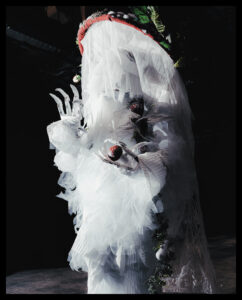
Copyright law is changing the way that design aesthetics develop
By Jennifer Bednard
Photos by Mark Burnham
By now, most people have heard of the landmark decision favouring Apple in a lawsuit against Samsung. Apple claimed that the Korean company had violated copyright in its designs for a whole host of smartphones. Design aspects such as the screen size, the rounded corners of the phone and the ability to zoom in or out by bringing the fingers together or apart were major considerations in the suit.
In another recent lawsuit, shoe designer Christian Louboutin was awarded the ability to trademark a certain aspect of his shoe design — red soles on high-heeled shoes. The decision requires any other shoe company to only use red soles on their shoes if the rest of the sole is red.
These decisions are signs of a worrying trend in patent and copyright laws: the extension of copyright to not only specific attributes of a brand, such as a logo, but also to more generalized aspects of a design. Awarding these companies the sole right to use certain design elements puts artistic design fully within the realm of copyright law. This is problematic, as design is art, and so much of art is a direct response to other pieces of art. Most recognizable art movements start from a few innovators, followed by a larger group that are inspired by the aesthetic. Imagine if the Group of Seven had been able to sue Emily Carr for painting impressionist Canadian landscapes.
To be sure, an art movement is different than a consumer product, but many of the principles remain the same. Many “masters” within an art movement were not the founders of movements, but were artists who enjoyed an aesthetic and realized how to fully realize the form. In the same way, product designers should be able to create variations on a design so that customers can choose the most pleasing and functional design. As long as the products are not virtually identical — something that the competitor would not logically encourage anyways, as they would be unable to differentiate the brands — there should be no problem with products with similar designs. A lawsuit of this type demonstrates that a company doesn’t believe their product actually is the best in its class.
Lawsuits based on design aesthetics are a slippery slope. If a designer can claim exclusive rights to the colour of the sole of a shoe, why couldn’t Ikea copyright the dimensions of its Billy bookcases? They could claim that the bookcase is famous enough that competitors’ bookcases with very similar dimensions are profiting off of Ikea’s unique idea. Will one company or another eventually claim every shape, colour, font and interface? At what point does copyright promote innovation and when does it begin to inhibit it?














